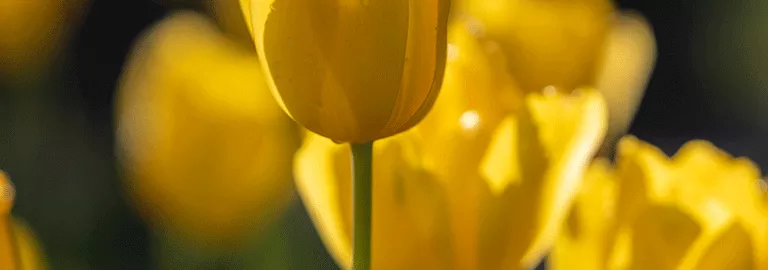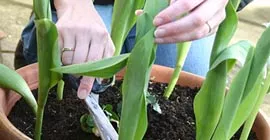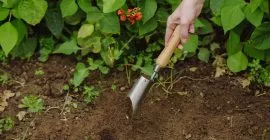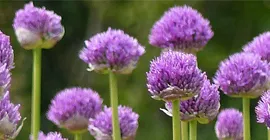The air is starting to get a little nippy and the evenings are now shorter, but that doesn’t mean we get to relax in front of an open fire just yet. It is now time to start thinking about next year’s garden. Choosing varieties, colours and the location of where you are planning to plant your spring bulbs.
Planting spring and summer-flowering bulbs will ensure that your garden is a riot of colour next season. All you need to do is get bulbs into the ground ahead of winter, then sit back and wait patiently for a floral extravaganza.
Drawing a sketch of your garden can often help you visualise a plan more clearly. Once you have decided what bulbs and where to plant, it’s time to start digging. Even if you don’t have a garden it’s no excuse! Container gardens are an excellent way to brighten up any area, you can also have some fun with containers and pots by taking more risks and mixing up different varieties that you wouldn’t normally plant together in your beds or borders.
The start to bulb planting
When selecting your bulbs make sure they are free from mould and are feeling firm and plump. Bulbs are normally inexpensive and readily available at this time of year. Typically they are the easiest way to grow flowers as they require such little care. It is such an easy way to bring a pop of colour to your outdoor space.
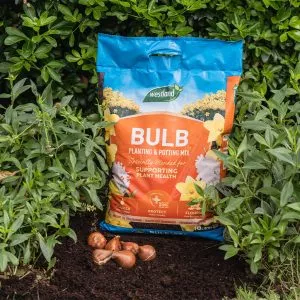
The right compost
Using a specialist bulb compost will give your bulbs the best start in life. Westland Bulb Planting & Potting Mix is specially blended to support the growth of dry, healthy bulbs. It has added grit for free drainage and the correct balance of essential nutrients and trace elements. If you are planting bulbs in beds and borders and have heavier soil, we recommend mixing some Horticultural Sand to it. This will break up the hard soil.
The right tools
A good bulb planting tool will also make planting a lot easier. Depending on the type of bulbs you are planting, depends on the type of bulb planter you need. Read our article on our best bulb planting tools.
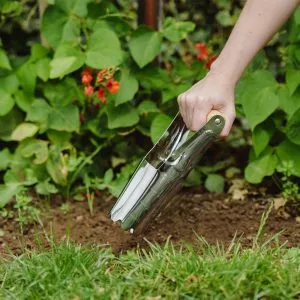
The general rule is that the bulb needs to be planted at least three times as deep into the ground. This is due to the bulb itself being high. In other words if the bulb is two inches long, plant it in the soil six inches down. Plant the bulbs roots down leaving the tapered part to the top. If you are unsure which way to plant the bulbs, then do so on their side. The shoots will find their own way to the soil surface.
Once you have your bulbs planted – water them in and add some mulch. Westland Bed and Border Chipped Bark is an excellent option as it conserves water and provides thermal insulation for plant roots. If you are unsure about how to do this, then read our advice article on How To Apply A Bark Mulch.
Can’t decide which bulbs to plant? Why not try our top combinations below:
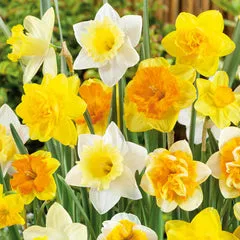
For the natural look, try Daffodils. Daffodils celebrate the arrival of spring with great fanfare. A huge choice is available, blooming in yellow, white, cream or lemon while some feature trumpets of different hues. Daffs work wonders in borders and look spectacular when naturalised into grass, while dwarf selections such as ‘Tete-a-tete’ put on charming displays in patio pots.
For brilliant displays of cheerful daffodils that come back year-after-year, choose the fattest bulbs and make sure they’re firm, with no signs of decay. Bulbs thrive in moisture-retentive, well-drained soil, ideally in a sunny position. Daffodils prefer to be planted early in autumn, so get bulbs into the ground without delay.
Before planting daffodils, dig soil over and work-in well-rotted compost. As a general rule, plant at twice the depth of the bulb – that’s usually around 10cm deep. While a trowel is essential for getting bulbs into the ground, a bulb planter will speed up the process, making it easier to dig out uniform planting holes.
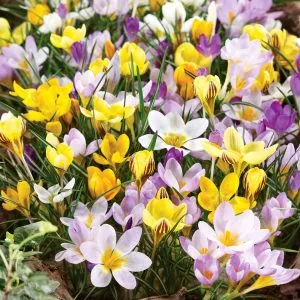
If it’s a bright burst of colour you want to see in spring then the Crocus mixed species collection is for you. October is the last chance to get spring-flowering crocus bulbs into the ground, along with alliums, many of which begin to bloom from Chelsea Flower Show time in May. Bulbs of summer-flowering favourites such as crocosmia and lilies can also go into the ground this month. If you’re pressed for time, winter aconites, hyacinths and snowdrops can still be planted in November.
Tulips promise a vibrant and colorful springtime spectacle. Planting tulip bulbs in autumn allows these resilient bulbs to establish strong root systems during the colder months, ensuring they receive the nourishment needed for a burst of blossoms come spring. Choose a well-drained, sunny location for your tulip bed, dig a hole at the recommended depth, and tuck in those bulbs for a seasonally synchronized garden delight. With little effort now, the reward will be a breathtaking display of tulips in the warming days ahead, adding a touch of elegance and charm to your outdoor space.
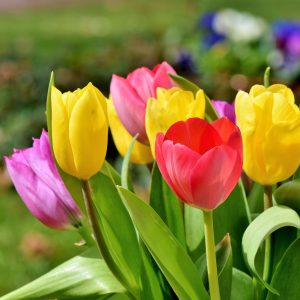
Container Planting
For a truly spectacular, long-lasting spring container display, plant different types of bulbs in layers in a large pot – this is known as lasagne planting. Fill the base of the pot with peat-free compost and set larger, taller-flowering bulbs such as daffodils towards the bottom. Cover with a layer of compost and plant medium-size bulbs such as hyacinths and tulips next. Once covered with compost, dwarf bulbs such as grape hyacinth and crocus can form the top layer. Again, cover with compost and wait for multiple bursts of springtime magic. This Marshalls 200 Bulb Bonanza Collection will help you create a rainbow in your garden whichever way you decide to plant the bulbs.
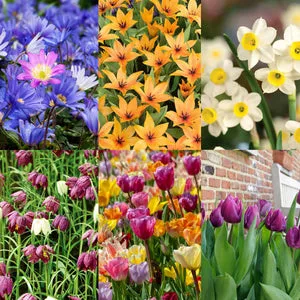
Perennials
While tender bulbous perennials such as dahlias and cannas can survive winter outdoors in mild areas, if grown in well-drained soil, leaving them in situ is a gamble and it is usually better to lift your plants. Once foliage has been blackened by frost, cut off the stems 5cm from the base. Use a garden fork to lift canna rhizomes and dahlia tubers from the ground. Clean and store in trays of sand in a cool, frost-free place..

